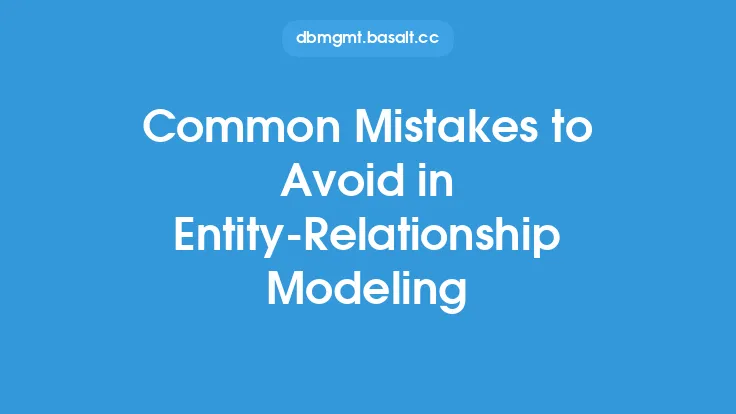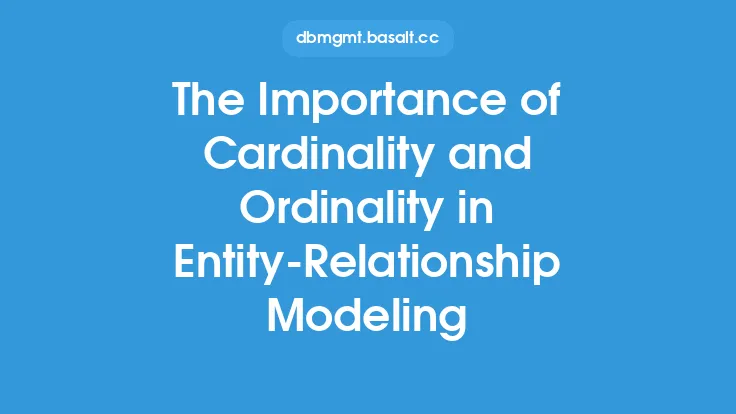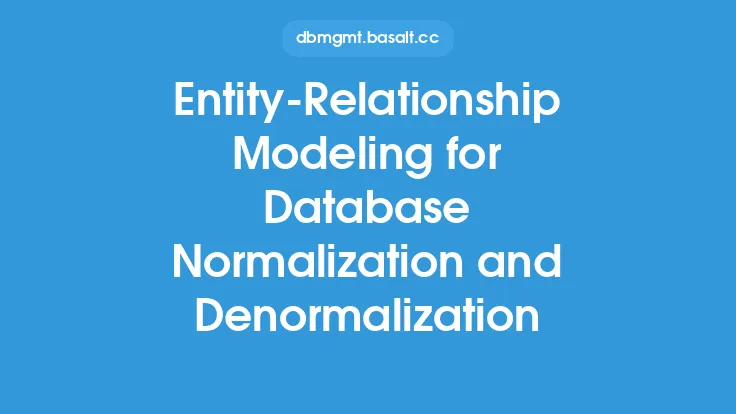Identifying entities and attributes is a crucial step in entity-relationship modeling, as it lays the foundation for the entire database design process. Entities and attributes are the building blocks of a database, and understanding how to identify them is essential for creating a robust and scalable database structure. In this article, we will delve into the details of identifying entities and attributes, providing a comprehensive guide for database designers and developers.
Introduction to Entities
Entities are objects or concepts that have an independent existence and can be described with a set of attributes. They can be tangible or intangible, and they can represent real-world objects, concepts, or events. Examples of entities include customers, orders, products, employees, and departments. Entities can be further categorized into two types: strong entities and weak entities. Strong entities have a unique identifier and can exist independently, while weak entities rely on another entity for their existence and do not have a unique identifier.
Identifying Entities
To identify entities, you need to analyze the problem domain and identify the objects, concepts, or events that are relevant to the database. Here are some steps to follow:
- Brainstorming: Start by brainstorming a list of potential entities based on the problem domain. Consider the key concepts, objects, and events that are involved in the domain.
- Analysis: Analyze each potential entity to determine if it meets the criteria for an entity. Ask yourself if the entity has an independent existence, can be described with a set of attributes, and has a unique identifier.
- Classification: Classify each entity as a strong or weak entity. Strong entities can exist independently, while weak entities rely on another entity for their existence.
- Refinement: Refine your list of entities by eliminating any duplicates or redundant entities.
Introduction to Attributes
Attributes are the characteristics or properties of an entity that describe it. They can be thought of as the data elements that are associated with an entity. Examples of attributes include customer name, order date, product price, employee salary, and department name. Attributes can be further categorized into two types: simple attributes and composite attributes. Simple attributes are single values, while composite attributes are made up of multiple values.
Identifying Attributes
To identify attributes, you need to analyze each entity and determine the characteristics or properties that describe it. Here are some steps to follow:
- Analysis: Analyze each entity to determine the attributes that describe it. Consider the data elements that are associated with the entity.
- Brainstorming: Brainstorm a list of potential attributes for each entity. Consider the characteristics or properties that are relevant to the entity.
- Classification: Classify each attribute as a simple or composite attribute. Simple attributes are single values, while composite attributes are made up of multiple values.
- Refinement: Refine your list of attributes by eliminating any duplicates or redundant attributes.
Attribute Properties
Attributes have several properties that need to be considered when identifying them. These properties include:
- Data type: The data type of an attribute determines the type of data that can be stored in it. Examples of data types include integer, string, date, and time.
- Length: The length of an attribute determines the maximum number of characters that can be stored in it.
- Nullability: The nullability of an attribute determines if it can be empty or null.
- Uniqueness: The uniqueness of an attribute determines if it must be unique for each entity.
Entity-Attribute Relationships
Entities and attributes are related in that attributes describe entities. Each entity has a set of attributes that are associated with it, and each attribute is associated with one or more entities. The relationships between entities and attributes are crucial in determining the structure of the database.
Best Practices
Here are some best practices to follow when identifying entities and attributes:
- Use meaningful names: Use meaningful names for entities and attributes to ensure that they are easily understood.
- Avoid redundancy: Avoid redundant entities and attributes to ensure that the database is normalized.
- Use standard data types: Use standard data types for attributes to ensure that they are consistent across the database.
- Consider data integrity: Consider data integrity constraints when identifying entities and attributes to ensure that the data is accurate and consistent.
Conclusion
Identifying entities and attributes is a critical step in entity-relationship modeling, and it requires a thorough understanding of the problem domain and the database design process. By following the steps outlined in this article, you can ensure that your database is robust, scalable, and meets the requirements of your application. Remember to use meaningful names, avoid redundancy, use standard data types, and consider data integrity constraints when identifying entities and attributes. With practice and experience, you will become proficient in identifying entities and attributes, and you will be able to create effective database designs that meet the needs of your users.





